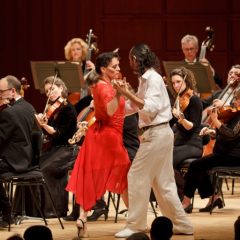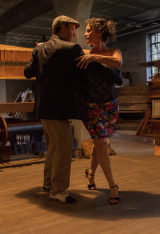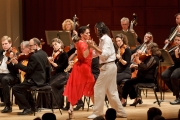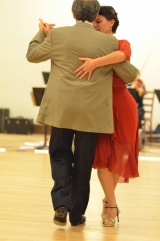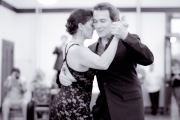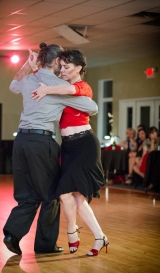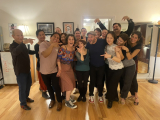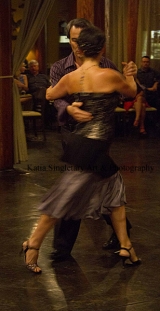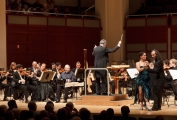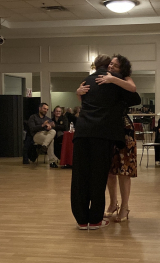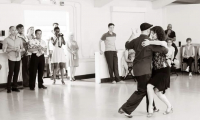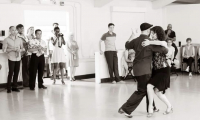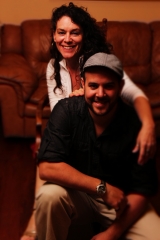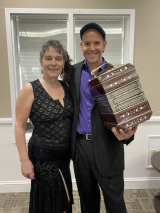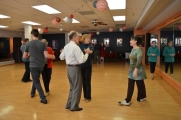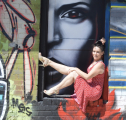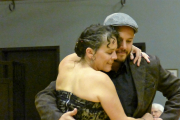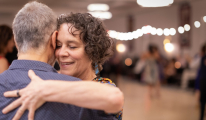NEWCOMERS INFO & FAQ
Table of Contents
(these are not links, you MUST SCROLL through the text below)
1 Study
2 Classes & Events
3 Music basics
4 Etiquette
5 Floorcraft
6 Personal hygiene
7 Asking for a dance
8 Declining a dance
9 Ending the engagement
10 A brief history
11 More about the music
12 How the dance exists today
13 Argentine vs Ballroom- What’s the difference?
14 Embrace
15 Walking
16 A Poem
17 Guidelines for a Productive Practice
18 Closing and Biography
revised Sept 2023
************************************************************************************************
Welcome New Tango Dancers
Thank you for your interest in this wonderful social dance!
1 STUDY Come to class and keep coming!
Keep going to classes and practicas – Go to social dances – Take occasional private lessons with a qualified instructor to get fine tuning. Break those unwanted habits BEFORE they settle in! Observe the etiquette at social events – Watch people dance – Get out on the floor and dance – Keep it simple. The journey is a long one but one well worth taking!! I recommend practicing- yes!! You have to have something to practice first!! It is essential to have a confident working knowledge of the basics before moving into more challenging movements.
Find an instructor. Watch them dance. Do you like the way they dance? There are many different styles and many ways to approach teaching the dance. You find what is right for you. Talk to people. Try out a class (or several different ones). Find someone who you “click “ with to learn from. If you are fortunate enough to have a few teachers to choose from, check them all out! It is beneficial to study with different teachers. Just understand that there are no absolutes in the dance. You may get conflicting information. That’s ok. They are just different perspectives. Along the way you will begin to get a feel for how you’d like to dance, and you will migrate toward a teacher who can help you get there. I encourage you to practice the basic skills of posture, walking and connection, until you are very comfortable navigating a social floor before picking up more “moves”. When you are ready to learn more, make sure you are learning from someone who is qualified to teach you, so you don’t learn poor, or no technique. The appropriate time to give feedback to your partner and dialog about what you are doing is during class and practica.
During the milonga is simply not the place for this.
Note- “Milonga” is the name given to the social dance party. It is also a more upbeat staccato form of the Argentine Tango dancing, with a different technique and music, that preceded the Tango.
I encourage the use of “I” statements and positive words during this process. If, during a practica or class, your partner starts to “teach” you, and you are uncomfortable with this, it is ok for you to ask to keep things more simple.
Be kind to yourself and your partner. This is a challenging dance in many ways! It takes most people about a year before they start to really feel comfortable navigating the social floor, just with the basic movements of the dance. Just like building a house, you want a very solid foundation! This is key to building the rest of your dance! Be kind especially to the leaders, as the learning curve for the leaders early on is much steeper than for the followers. (In the beginning… the followers hard work comes further down the road!)
Tangogypsies offers workshops for newcomers and experienced dancers, private lessons, as well as special weekend events. Watch for these special events on the “Asheville Tango Community” facebook group or here on my website- www.tangogypsies.com
We are fortunate to have more and more opportunities to study and dance within the SE region, with Tango groups throughout the SE.
Generally, there are more followers than leaders at any given event- Just the way it is. I also encourage dancers to learn both roles. This offers valuable perspective in the learning process, AND followers do not have to sit and wait at a social event if they can lead!
2 CLASSES & EVENTS
There is a facebook group- “Asheville Tango Community” for much more about events in Asheville, and another FB group “Southeast Tango” for events all over the Southeast and beyond. This is where most events are listed. I also keep my website up to date for TANGOGYPSIES events.
3 MUSIC BASICS
There are different types of music you will hear within the “family” of Argentine Tango music; Tango, Vals (a waltz rhythm) and Milonga (a more staccato, faster rhythm). The dance reflects the music. Listen often to Traditional Tango music- this way you become familiar with the nuances and intricate rhythms of the music. Becoming familiar with the “Golden Age” classics is key to progressing in your dance musicality. Tango Nuevo is electronic music made for tango. Alternative is any other music (non tango) that you choose.
Some traditional music I recommend;
Juan D’Arienzo- El Rey Del Compas
Carlos Di Sarli- Instrumental & y su Orchesta Tipica w/ Rufino
Osvaldo Fresedo y su Ochesta Tipica w/ Roberto Ray
What is a Tanda?; At milongas, the DJ will play music in sets (called tandas) of 3 or 4 songs by the same orchestra from the same period. Traditionally, the DJ will play a cortina between tandas. A cortina, or “curtain” is a short piece of non-tango music that tells the dancers this tanda is over and a new tanda is about to begin. The next tanda will be a different style of music and is normally danced with a new partner.
Traditionally, one will dance the Tanda with the same partner, to develop a connection and hopefully share a few “Tango Moments”. The cortina is the time to change partners if one desires. It is not required, and often couples who come together to a milonga may choose to dance exclusively. It is also nice to mix and experience different partners at a milonga, but it is the choice of each person. Generally, when the cortina plays, all couples clear the floor, whether they will continue to dance or change partners.
4 ETIQUETTE
Argentine Tango has fairly strict codes of behavior that apply to the dance scene worldwide. A “milonga” or social dance party, is just that….purely social dancing. Dancers are there to enjoy themselves in the connection and dance with their partner. The idea is to dance at a level not above one’s partner, keep it simple, musical and connected.
Teaching or talking on the social dance floor (milonga) is simply not acceptable behavior in any Argentine Tango community. It disrupts the energy of the milonga, the line of dance, and can be disturbing to the dancer who is “being taught”. Instead, make mental notes for later discussion.
If you must talk on the floor, keep it to a minimum. No one else should be aware that you are talking. If you must dialog with someone, never do so on the main area of the dance floor; find a side area that does not obstruct the other dancers. Under no circumstances should you correct your partner while on the social dance floor, even if they ask.
Part of the issue here is a lack of education about the etiquette. This dance has a long history and rich culture, which include these codes of behavior. It is important to observe, reinforce and respect these codes in all communities. Tangogypsies curriculum includes teaching these codes so that every dancer can enjoy the milonga experience
5 ETIQUETTE; FLOOR CRAFT
The dance floor is like a highway, with lanes for every type of traffic. The Line of Dance progresses counter clockwise. Stay in your lane of traffic. Passing only when absolutely necessary. Leave a one step safety buffer from the couple you are behind and from the edge of the floor, tables, chairs, etc.
Don’t overtake unless absolutely necessary and, if it is necessary, do so only on the left not on the right (blind) side of the leader in front of you. The outer most lane is for continuous traveling. The inner central area is for divergence. If you want to do moves that require you to stop, move to the center.
Note- If there is a large space in front of you it means there is a large crowd behind you!!
As you enter the Ronda (Circle of couples that form the line of dance), leaders, make eye contact with the leader of the couple you are getting in front of. Leaders, you are also responsible to watch where you are going to protect your partner. KEEP MOVING when possible. Each couple is dancing not only with their partner but also with every other couple on the floor. Respect your fellow dancers. NO traveling backwards against the line of dance.
Everyone, keep your feet on the floor, unless you are SURE that your embellishment is directed to empty space. It is always a follower’s option not to perform any movement, if she thinks them unsafe. Remember, too, that the leader proposes a movement then follows his partner’s response. Leaders- don’t drag a follower through whatever is was you wanted to do!
Reminder; Generally, when the cortina plays, all couples clear the floor, whether they will continue to dance or change partners.
When not dancing, don’t impede the line of dance (LOD) by standing around chatting or walking on the dance floor when the music is playing unless absolutely necessary; if you must walk on the floor, stay at the edge and remember that it is your responsibility to stay out of the way of those dancing.
6 ETIQUETTE; PERSONAL HYGIENE
Argentine Tango can be an intimate experience. Please use deodorant. Wear a clean shirt and bring a spare if you worry about getting sweaty. Refrain from wearing strong perfumes or other scents for the sake of others. Some people are actually chemically sensitive, while others just don’t appreciate smelling like the person they danced with for the rest of the evening! If you must use some fragrance, please use it sparingly. Breath mints or gum are also a good idea to have. If you have a cold, flu, or stomach bug, please stay home and get better before coming back to dance! Wash your hands frequently.
7 ETIQUETTE; MIRANDO & CABACEO– asking for a dance
There is a charming, face-saving traditional way to invite a dance– the mirando cabeceo. The immense charm is in its subtlety – it avoids an awkward situation and unpleasantness by the smallest of gestures, whose meaning – particularly if the follower declines – is kept private between the couple involved. Followers generally sit and scan the room (miranda) for leaders they would like to dance with. Try to make eye contact with these leaders. The leader is also scanning the room and either makes or breaks eye contact, signifying that they do or do not want to dance. Once eye contact is made, acknowledgment from both parties can be a smile, a raising of eyebrows or a subtle head nod (cabeceo) toward the dance floor. If you happen to make eye contact with someone you do not want to dance with, make no reaction, simply look another direction to decline. This ensures that no follower is invited by a leader with whom they do not want to dance, and no leader suffers the embarrassment of being refused. Only when you are standing face to face, eye to eye, should the follower get up to dance. (This prevents crossed signals, where the intended partner may be sitting in the line of site, but one or two rows back).
As the dance and culture evolves, more often now, in Argentina, North America and Europe, one may be asked directly: “Would you like to dance?” If you choose to use this method, be prepared to be declined, and remember, it is rude not to take the first “no thank you” for an answer. If you travel to Buenos Aires, in most milongas, even today, the cabeceo is still the most preferred way. Using the mirando & cabeceo also shows that you are a dancer who has been educated in traditional etiquette!
At a milonga, serious dancers (leaders and followers) often won’t dance with somebody they haven’t seen dance, so both leaders and followers need somebody to show them off when arriving at a milonga where they are not known. This is why it is also traditional for couples and friends coming to a milonga together, to dance the first (and often last) tanda or tandas of the evening together!
Showing off the follower is a big part of tango – keep them between you and the edge of the floor as much as possible. This also keeps them safe!
*Do keep in mind that we were all beginners once. I encourage everyone to dance with a new or newer dancer at each event.
It can be considered impolite to invite somebody you know for the last song of a tanda, since it implies that you want to dance only one dance. This does, however, provide a good way to find out how well somebody you don’t know dances. This is especially true for leaders: an experienced follower who is not dancing by the last song of a tanda will usually risk one dance with an unknown leader.
8 ETIQUETTE; declining a dance
If a potential partner does not recognize that you broke, or worse yet never made eye contact, just say “No, thank you”, with or without a big smile. This is important! If dancers allow themselves to be pressured into dances they don’t want or otherwise accept rude behavior, they encourage it. ALL dancers have the absolute right to decline to dance with anyone, at any time (even in the middle of a dance), for any reason. You may wish to offer a courteous excuse such as, “I am resting/would rather not dance to this music, etc.,” to soften the refusal. If you would like to dance with this person at another time be sure to say so. If a partner declines, please take the “no thank you” politely.
9 ETIQUETTE; ending the engagement
“Thank you” is the traditional way of saying, “I want to stop dancing”, no matter what the reason. It is customary to dance 3-4 dances (the whole tanda) with the same person before saying the magic word “thank you” and moving on. If you decline a person before 3 dances, it will convey the message that you don’t enjoy dancing with them, (which is sometimes necessary) and it should be done only if you are very uncomfortable with your partner’s dancing or other behavior. Once you say “thank you”, the engagement is ended.
At the end of a tanda, or between songs, if you want to continue to dance, use other phrases; ”That was really nice”, “I enjoy dancing with you”, etc.. Remember- Traditionally, when the cortina plays, all couples clear the floor, whether they will continue to dance or change partners. When the dancing is finished, it is nice for the leader to walk the follower back to their table. It can be disorienting after dancing, when the room is crowded, for the follower to find their table. Besides, this is just a courteous way to end the engagement!
TRADITIONAL TANGO ETIQUETTE MAKES
PARTNERS WANT TO DANCE WITH YOU AGAIN.
PLEASE HELP US TO CULTIVATE THESE CONCEPTS
for a healthy and respectful Tango community!
10 A BRIEF HISTORY
The exact origins of tango are lost in myth and an unrecorded history. The generally accepted theory is that in the mid-1800s and early 1900, while Argentina was undergoing a massive immigration, African slaves were brought to Argentina and began to influence the local culture. About 2 million immigrants arrived in Buenos Aires. The intermixing of African, Spanish, Italian, British, Polish, Russian and native-born Argentines resulted in a melting pot of cultures, with each borrowing dance and music from one another. Most immigrants were single men hoping to earn their fortunes in this newly expanding country. They were typically poor and desperate, hoping to make enough money to return to Europe or bring their families to Argentina. The evolution of tango reflects their profound sense of loss and longing for the people and places they left behind.
Most likely the tango was born in African-Argentine dance venues attended by young men, mostly native born and poor. Men danced together – there were few women, but tango inevitably moved to where the women could be found. They took the tango and introduced it in various low-life establishments where dancing took place: bars, dance halls and brothels. It was here that the African rhythms met the Argentine milonga music and soon new steps were invented and took hold.
Although the high society looked down upon the activities, their sons were not averse to slumming. Eventually, everyone found out about the tango and, by the beginning of the 20th century, the tango had established a firm foothold in the fast-expanding city of its birth. It soon spread to provincial towns of Argentina and across the River Plate to Montevideo, the capital of Uruguay, where it became as much a part of the urban culture as in Buenos Aires. The worldwide spread of the tango came in the early 1900s when the sons of wealthy Argentine families made their way to Paris. They introduced the tango into a society not entirely averse to the risqué nature of the dance or dancing with young, wealthy Latin men. By 1913, the tango had become an international phenomenon in Paris, London and New York. There were tango teas, tango train excursions and even tango colors—most notably
orange. The Argentine elite who had shunned the tango was now forced into accepting it with national pride. The First World War brought a hiatus to the development, but during this time the first films were made, the tango lyrics and music developed and recordings were made. Tango emerged from the small venues, where sex and machismo were the everyday, to become mass entertainment, danced by thousands of respectable citizens in many prospering cities: Argentina was now one of the richest countries in the world. The dance was then refined to the slick and elegant ‘salon’ style, the lyrics of the songs slowly moved from lamenting the poverty and loneliness of the immigrant men, to more generic love songs for the mass market. By 1930 Tango was out of fashion in Europe, but in Argentina the Golden Age was starting, with a flourishing in music, poetry and culture, and the tango came to be a fundamental expression of Argentine culture. Then, the depression also changed the character of tango, and the lyrics reflected the renewed poverty and social divisions in the country. However, the Golden Age lasted through the 40s and 50s, and this is the period of its greatest development and expression.
Tango continued to change with political and economic conditions, and we can hear this in the music. In poorer times, orchestras were smaller, and as political repression developed, lyrics become political too, until they started to be banned as subversive. The dance style changed, as large salons closed, and dancers were once again forced into small venues with less space. Tango eventually went out of fashion, crushed like many other dances, by the arrival of American swing and rock and roll, and was repressed by the nationalist government. From the 1960s to the 1980s it was only danced and played by a few of the older generation and enthusiasts. The tango survived in smaller, unpublicized venues and in the hearts of the people. The current revival dates from the early 1980s, when a stage show Tango Argentino toured the world creating a dazzling version of the early and golden ages of tango. This is said to have stimulated the revival in the US, Europe and Japan. With the arrival of democracy in Argentina, and a search for a national culture, tango interest was revived, and although still ignored by many young people, there is enough interest to supply the world with a steady stream of hopeful tango teachers and a market for musicians to rediscover and reinvent the music. Since the 1990s there has been an explosion of interest around the world with places to dance in many cities and towns, and a growing circuit of international festivals.
11 MORE ABOUT THE MUSIC
Some people see tango as primarily a dance – a connection between two people. However most will say tango is the music, and the lyrics, and the dancers’ interpretation of that music, and the sentiments it expresses. Getting to know the music is part of learning tango. Learning the music enables you to dance with much more confidence and enjoyment.
The classic tango orchestra or ‘orquestra típica’ is made up of bandoneons, violins, piano, and bass. The guitar is also a common instrument, especially accompanying singers. The Bandoneon, perhaps the key to the tango sound, was originally developed in Germany for churches that could not afford organs.
As the music developed it became less rigidly rhythmic, more harmonic and melodic, and the hallmark tension and release was developed. Many interwoven layers of music can be picked out and danced to, each with their own rhythm and feeling. The ‘traditional’ orchestras (e.g. Canaro, D’Arienzo) played it simple and pleased the dancers. Composers and players, such as Pugliese, and Piazzola were more interested in the music, and played for listening. Their music takes the tension and release further, with time changes, and they also introduced spectacular pauses and accelerations.
Different tango music tends to suggest different styles of dance when we hear it. Some music suggests a “pushing” or “driving” dance with its strong rhythm, while others are more flowing or “pulling”, while still others are full of tensions and accelerations. In the end it is up to the couple how they dance, but it is important, and more interesting, to really listen to the music, and not just dance the same all the time.
More recently- The so-called post-Piazzolla generation (1980-on) Piazzolla and his followers developed Nuevo Tango, which incorporated jazz and classical influences into a more experimental style. Even more recent trends can be described as “electro tango” or “tango fusion”, The music still has its tango feeling, the complex rhythm and melody, but with the addition of strong electronic components for a unique and modern tango sound. The idea is to “draw the music” when you dance. Top represent the music with your movements.
12 HOW THE DANCE EXISTS TODAY
The social dance is what we see in the setting of a milonga, or “dance party”. Within the structure of Argentine Tango, the social dance is improvised, from step to step, based on the music, the couple dancing, and the entire floor of dancers. The movement is decided based on actual space available to progress in the line of dance. This is the way Argentine Tango is danced today in the salons of Buenos Aires and around the world.
The social dance embrace varies, depending on the venue and music, and the preference of the couple. In close embrace, which is the more traditional form, dancers have their upper torsos touching the entire dance. In an open embrace, more of a Nuevo style, or “new tango”- the embrace can be anywhere from barely open to a full arms length away. The embrace is fluid and dynamic. Often a couple will move from close to open, at times even releasing the embrace, to return to a closer embrace again, all within a single dance.
Performance Tango or Show/Stage Tango was originally developed so that the dance could be seen on stage from the back of a theater. The embrace opened as the dancers incorporated larger “showy” movements into the dance. These larger more complicated movements required more skill, more practice, and necessitated the dancers choreographing the dance. This movement toward choreography for the stage continued into what most stage productions are today, well organized, rehearsed professional choreographed shows.
Often at the milongas there are demonstrations by couples, some choreographed, some are completely improvised. I feel it is important to note, if you are watching a performance or demonstration, to know that you are watching an improvised dance or a choreographed routine.
A more recent trend is to dance Tango to non-tango, nuevo tango, or electronic music. This is happening both socially, as well as for performances, or show Tango. Also becoming more popular is to blend other dance forms within the Tango structure/movement. Some will argue that this form of tango is pushing the line of defining the dance as Tango.
In it’s essence, the tango is simply a walk, connected with your partner, moving to the music. It can be very simple, and very pleasing in that simplicity. It can become quite challenging in the learning process, to balance the desire to learn more “Moves”, while maintaining the balance of connection with your partner, and simply moving together to the music.
13 ARGENTINE TANGO VS BALLROOM TANGO– what’s the difference?
Argentine tango consists of a variety of styles that developed in different regions and eras, and in response to the crowding of the venues. The present forms developed in Argentina and Uruguay, but Argentine tango has been an evolving dance and musical form, with continual changes still occurring every day on the social dance floors in Argentina and in major tango centers around the world.
Argentine Tango relies heavily on improvisation. Every step is led, not only in direction, but also speed and quality, and the default patterns can be “blocked”. Essentially, there is no “basic step.” The leader “invites” each step and direction, the follower “answers”. Potentially, all the “what, where , when and how” of each step can be a shared, and co-creative experience. Styles vary as much as individual personalities.
Ballroom Tango (also referred to as International Tango)
Steps, sequences and techniques derived from Argentine, Hollywood and other socially popular influences of the time were standardized by dance studios for instruction and competition, and have been relatively fixed in style for decades. Ballroom tango is formulaic. There is little room for improvisation.
14 ARG VS BALLROOM; the embrace
A striking difference between Argentine Tango and Ballroom Tango is in the shape and feel of the embrace. Ballroom Tango technique dictates that partners arch their upper bodies away from each other, while maintaining contact at the hip, in an offset frame, the head looking over the left shoulder. Arms are elevated, and the embrace is fixed and static. In Argentine Tango, it is nearly the opposite: the dancers’ chests are closer to each other than are their hips, and often there is contact at about the level of the sternums (the contact point differing, depending on the height of the leader and the closeness of the embrace). The embrace can vary from very open, in which leader and follower connect at arms length, to very closed, in which the connection is chest-to-chest, or anywhere in between. In close embrace, the sternums of both the leader and the follower are in complete contact. In open embrace, there can be as much space as desired between the partners, and the head is neutral and comfortable over the spine. Even when dancing in a very open embrace, Argentine Tango dancers do not hold their upper bodies arched away from each other; each partner is over their own axis. Whether open or closed, an Argentine Tango embrace is not rigid, but relaxed, like a hug, and always dynamic, changing and fluid.
15 ARG VS BALLROOM; walking
In Argentine Tango the leader may freely step with his left foot when the follower steps with her left foot. In English, this is sometimes referred to as a “crossed” or “uneven” walk (or as “walking in the crossed system”) in contrast to the normal walk which is called “parallel” or “even.” The dance is essentially walking with a partner to the music. Musicality (i.e. dancing appropriately to the emotion and speed of a given tango) is an extremely important element of dancing Argentine tango. Since Argentine tango is almost entirely improvisational, focus is on clear communication between partners. Each step is an invitation from the leader, with an answer from the follower. As the dancers become more experienced, this this “give and take” appears seamless to the outside observer.
In Ballroom Tango “crossed system” is considered incorrect (unless the leader and follower are facing the same direction). The couple dances together through known sequences that fit to the music in a standard time, with a clear beginning and end to each sequence.
16 POEM “Tango is More than just a Dance”
By Nito- World renown Tango dancer and instructor
It comes into your life as a simple interest, develops into a nice hobby, slowly grows into an obsession… And gradually becomes your lifestyle…
Tango is not just a combination of pretty steps…
it is a bouquet of human emotions – passion, anger, happiness, desire, lust, jealousy, love…
interpreted uniquely by each individual person…
and expressed on the dance floor…
Our vocabulary is rather limited…
there is only so much that you can say in words…
You can write pages and pages of romantic letters to the woman
that you love, and still have a hard time expressing your true feelings…
but a single touch, a sole motion on the dance floor
can let her know so much in a single moment!
Tango allows you to communicate your feelings and emotions much stronger…
you are happy you dance one way…
you are sad or angry – you dance another way!
The steps and moves that seem to be the same will come out
differently depending on how you feel at that particular
moment, what music you are dancing to, and who you are dancing with…
Precisely because of that no Tango is ever the same!
Every dance is always unique… it is pure improvisation!
You may know the steps in your head…
but your heart tells you where to move.
Tango brings together people from all walks of life…
and erases their differences! It does not matter how old you are…
it does not matter who you are or what you do for a living…
all that matters is that you want to dance…
When you are on the dance floor… nothing else exists around you
You surrender to the music and let it move you… it gets deep inside your
heart and your soul, engulfs you completely… captivates you…
Tango is not just a dance… it is a lifestyle… it is distinctively timeless and everlasting…
It spans through decades, continents, nations
and people! Tango is a unique culture, rich with history, thrilling and
controversial, passionate and mysterious…
And with every single song, with every single dance it draws you to it
stronger and stronger and makes you want to be part of it more and more…”
17 Guidelines for a Productive Practice
First and foremost, work alone to find your axis.
Choose an element, concept or movement. Be specific.
Practice alone, working slowly, focusing on the quality of the movement, your balance, posture, how and from where you are moving yourself.
Check where you are creating or holding extra tension in your body. Work to release unnecessary tension.
Use mirrors, or record and then watch yourself.
Adjust and re-record. Repeat. AND/OR
INVITE a partner
to work on that specific topic with you. Break down the movement together to find it’s fundamental elements. (for example, an ocho contains a step and a pivot)
Establish a practice period, where each dancer is making “mental notes”, but otherwise remaining silent. Work SLOWLY on each of the elements and then reconnect the complete movement (Perhaps 5 min or 2 songs) Practicing slowly allows close examination of technique, balance, relative position, and timing.
Changing roles is encouraged for a more complete understanding and appreciation for the opposite role.
After the practice period, have a time for dialog, where each dancer has a chance to offer feedback. Remember listening is as important as what you choose to say. Choose one point that felt “good,” or “right”, and speak to one thing that “could be improved”. Take turns speaking, allow space for each to offer input. Be kind, keep it brief and to the point.
REMEMBER to think before you speak, to use “I” statements; “I feel, I need, I would like, I think”….and avoid the use of negative and blaming statements; “you need to, you are/are not, that is not right”….
Repeat a practice period, working to incorporate the new information. Decide together whether to continue, choose a new focus, or change partners.
18 CLOSING
Every person who dances Argentine Tango has their very own perspective of the dance, or will eventually, based on their personal experience, their training , and their personality. My personal journey has been a wonderful, long and challenging process. Studying, dancing socially, and teaching others has been, and continues to be, for me, a wonderful vehicle for personal growth!!
I began my Tango journey in the winter of 1997, and still to this day, continue on my path …..traveling to study, dance socially and to share my passion for the dance by teaching others what I have learned!
This journey is a unique one, different for each of us. I encourage you to enjoy the process, be easy on yourself and your partners along the way. Like many of the best things in life, this is not something that comes easily or quickly to most people. The journey is a long one, with many challenges along the way and ultimately it has no end…….there is no “arrival”…….so enjoy where you are in every moment!
Thanks for your interest!
Remember- It’s not WHAT you do, but HOW you do it!!
Information compiled from my personal Tango journey,
as well as from these sources, and more.
http://www.virtuar.com/tango/articles/2006/milonga_etiquette.htm
http://www.tangomuse.com/TangoManners.html
http://www.tejastango.com/tango_history.html
For me, Tango is a metaphor for life.
The tango journey is a life long process
Perfectly imperfect in every moment!
Karen Jaffe, Tangogypsies
www.tangogypsies.com
